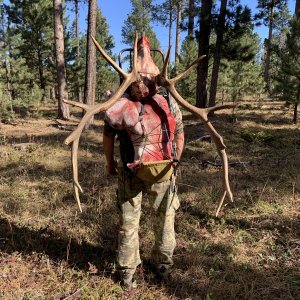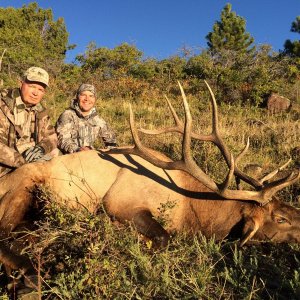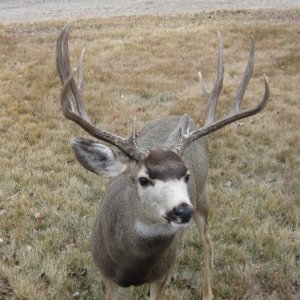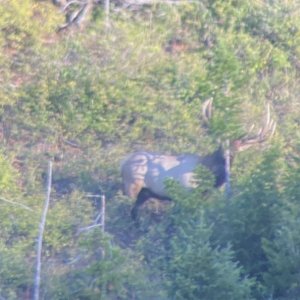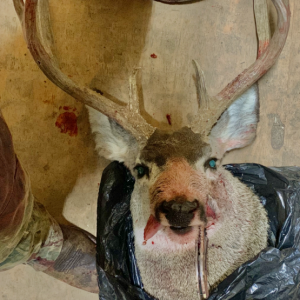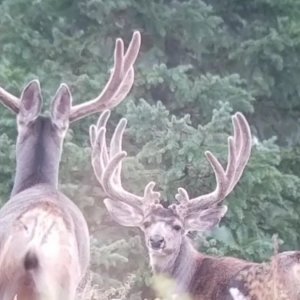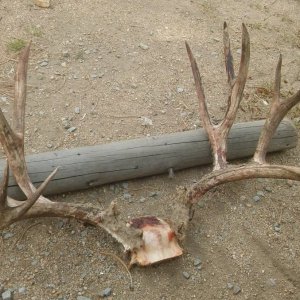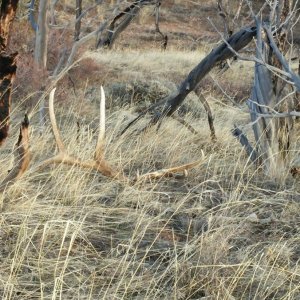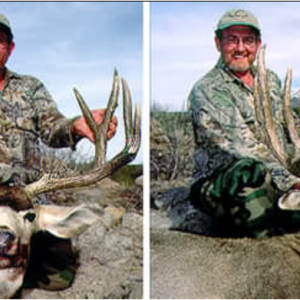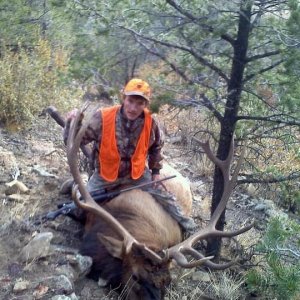We are also experiencing a extremely harsh drought for the last few years, what happens if we can get back to normal rain fall and winter Conditions what effects will that millions of acres do to bounce back?
You can't just look at the habitat work that's been done and say, well the deer herds are still sh!t I guess that was a waste.
There is so much going into the deer decline the drought has just magnified everything.
Bingo! A winner.

I'll probably hate myself in the morning...a few thoughts...
It's on a kaput PC right now, but I researched & wrote an article titled "Water, Water Everywhere" on this issue of water/decreasing deer populations about 30 years ago for Rocky Mt. Game & Fish magazine. Nothing has changed, & it ain't rocket science.
Water from guzzlers & tanks simply keep critters from dying of thirst; that water provides zero nutrition. The latter takes
rain at the right times on the
foods deer consume. Cutting buck tags does not
GROW a deer herd, it merely allows some bucks to unnecessarily live longer.
In the early 1980s, AZ experienced a couple of flood years in regard to rainfall. The deer populations subsequently exploded. Nearly every Doe was dropping twins, & the twins were having twins. If I recall, we had more than 100,000 permits one season & close to that for another one.
Here's a snippet from my HOW TO HUNT COUES DEER book published in 2003. Bryan Wakeling replaced Ray Lee -- both in position and in his thoughts on the subject.
******
Habitat condition, as it relates to nutrition, plays a key role in both the initial pregnancy and the survival of the fawns. While a doe normally drops a single fawn her first year, she's likely to have twins in subsequent years. That might not be the case, though, when the habitat is in bad shape. The same applies to the fawn's survival through its first winter.
DROUGHT
Unless someone has spent the last few years living in a cave, they know about the decade-long drought that has plagued the Southwest. The lack of rainfall, especially at key times of the year, has wreaked havoc with the deer populations in several states, including Arizona and New Mexico. Most likely, the same situation exists in northern Mexico.
The relationship between moisture and deer populations can be somewhat difficult to understand, but what it mostly comes down to is habitat.
The simple explanation: when plants get rained on, they grow and provide moisture, nutrition and cover for deer. Obviously, lots of rain also provides more standing water for drinking, too. The more complicated explanation involves all the interrelationships within the simple one.
AGFD big game supervisor Brian Wakeling explained the 2003 cut as being pretty much the same ol', same ol- a lack of rainfall at the proper time.
"We just can't seem to get several years in a row where the yearly rainfall comes during the times we need it. For example, Phoenix averages only seven inches of rain annually. If we get all seven inches in January, it would be great for that month but not for the other 11 months of the year. If one looks at a rain gauge on an annual basis, it doesn't appear that bad. But getting rain all at once and then not getting any for the next six months can be devastating to our deer," he said.
"Arizona's deer need a bi-seasonal rain pattern -- the storms we get from the northwest during the winter and the ones from the south in the summer. If neither one of those happen, our deer suffer. Unfortunately, for more than a decade, we've been getting good rains from one or the other but very rarely from both in the same year.
"The winter rains are great for the does because they wind up with plenty of milk that's high in protein and fats to feed the newly dropped fawns. But the precipitation from June into late August plays a major role in the survival of our fawns. These rains are the ones that allow the fawns to put on weight and survive the winter. If there's no food, the jump-start those fawns got from the good winter moisture is negated. In addition, poor forage translates to a doe having only one fawn instead of two."
Wakeling suggests that the future will get brighter if we get some rain.
"In reality, our on-the-ground surveys have shown that the Coues deer populations across the state as a whole have remained fairly stable over the last few years. Some areas have dropped while others have filled in the voids. Since 1980, the population had reached a high of about 93,000 animals, and we estimate the post-hunt whitetail population for 2003 at about 80,000 to 82,000 deer," he said.
"One or two years of good rainfall immediately helps the fast- reproducing small-game animals like quail and rabbits, but it takes time for the improved habitat and diet to translate into healthier, more productive large game animals such as deer. So we're hoping we can enjoy several years of year-round moisture in a row. That's the only way our deer herds will rebound."
Today's Note: the next to last sentence above hasn't yet happened.
